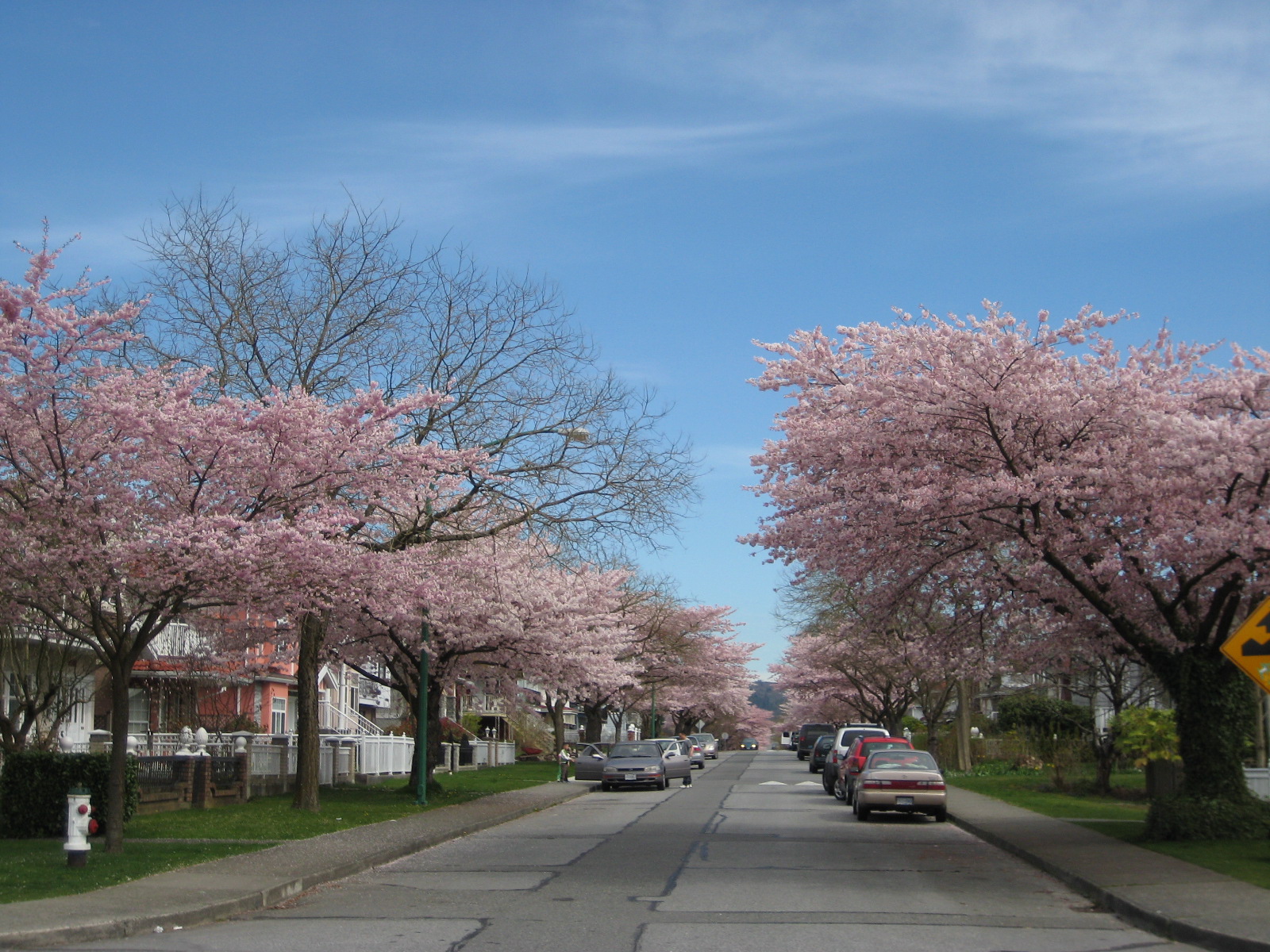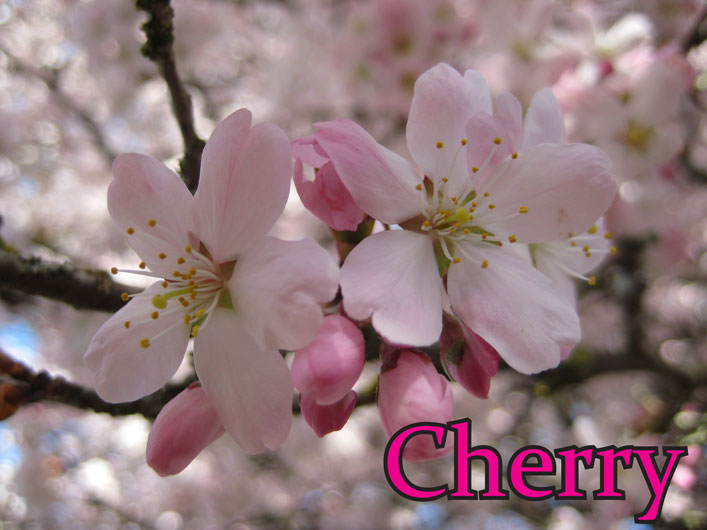

At the end of March, when you see rows of pink trees, in Vancouver don’t be too quick to yell “Cherry blossoms!” These trees might be plum trees – not cherry trees! To find out, you’ll have to get closer.
There are 12,000 plum blossoms in Vancouver. Plum trees are beautiful, but since the Vancouver Cherry Blossom Festival aims at celebrating the beauty of cherry blossoms – not plum blossoms – we prepared this guide to help you to know the difference between plum blossoms and cherry blossoms.
The main characteristics of plum blossoms are:
- fragrant (they smell good)
- no split at the end of petals
- dark trunk with no horizontal lines
Check this out:


The smell of plum blossoms: Plum blossoms are very fragrant. At this distance, if your tree smells good and “flowery”, it’s probably a plum tree.
The smell of cherry blossoms: The early cherry blossoms are not fragrant. They don’t smell good or “flowery”. Their smell is very faint (almost non-existent), except for some rare cultivars in mid-season that can be very fragrant.


Petals of plum blossoms: Plum petals are oval. There is no split at the end of the petals.
Petals of cherry blossoms: Cherry blossoms have a small split at the end of each petal.


Bark on plum trees: The bark of plum trees is dark and does not have horizontal bars.
Bark on cherry trees: the bark of cherry trees is light grey and has horizontal lines called “Lenticels”.


Buds of plum blossoms: The plum buds are round and there is only one blossom coming out of each bud. They stick straight out from the branches on a short thin stem.
Buds of cherry blossoms: Cherry buds are oval. There is more than one blossom coming out of the bud (in this picture, six flowers are coming out of the bud.)


Leaves of plum: If the leaves are purple, then it’s definitely a plum tree. Plums leave come out with the flowers and unroll from a cigar shape.
Leaves of cherry: The leaves of cherry trees are green (or copper) and, for the early cherries, come out usually after the flowers. Cherry leaves unfold like a billfold opening.


Grafts: On plum trees, the grafts are placed on the branches. They grow vertically on the branches. These grafts will be more visible in early spring before the flowers bloom.
Grafts: On cherry trees, the graft is placed on top of the trunk so the tree looks “stompy”.


The shape of plum: mostly round or oval.
The shape of cherry trees: umbrella shape (the branches are spreading, so the top is wide than the bottom).


Colour: plum blossoms can be pink (with purple leaves) or white (with green leaves)
Colour: cherry blossoms can be dark pink, light pink, white, yellowish. The leaves are copper or green and come out usually after the flowers.

Plum characteristics: When all the plum blossoms are open, you can’t see the buds – and it’s hard to see the grafts – so you’ll have to rely on the plum blossoms main characteristics:
- fragrant (smell “flowery”)
- no split at the end of the petals
- dark trunk (with no horizontal lines)

Cherry characteristics: There are over 54 varieties of cherry blossoms but they all share the same characteristics:
- a split at the end of each petal
- the light-grey trunk has horizontal bars
***
Think you got it? Take the test!
Cherry or plum blossoms?

Answer: plum.
Purple leaves and no split at the end of the petals.
***

Answer: plum.
No split at the end of petals. One flower coming out of the bud. Smells “flowery”.
***

Answer: cherry.
Split at the end of the petals.
***

Answer: cherry.
Horizontal lines on the bark.
***
You might also like:
Cherry versus plum blossoms: What’s the difference (March 28, 2013)
How to tell the difference between cherry trees and plum trees (infographic)
***
To learn how to identify 54 varieties of cherry blossoms, buy Ornamental Cherries in Vancouver, by Douglas Justice. Happy cherry blossom viewing!

